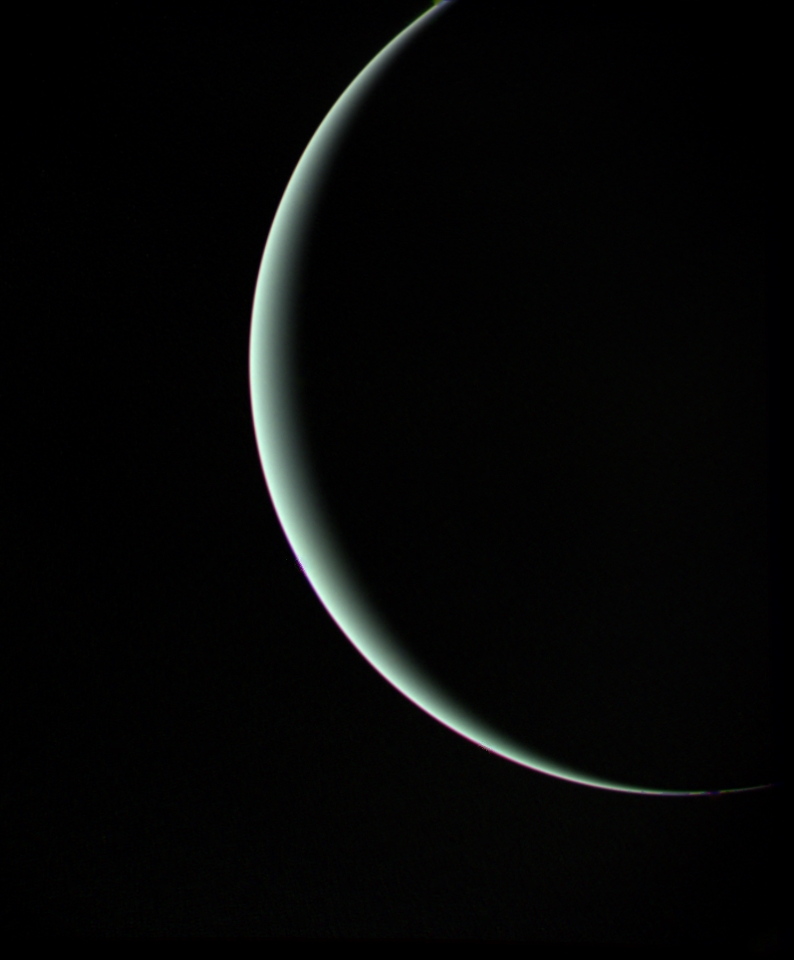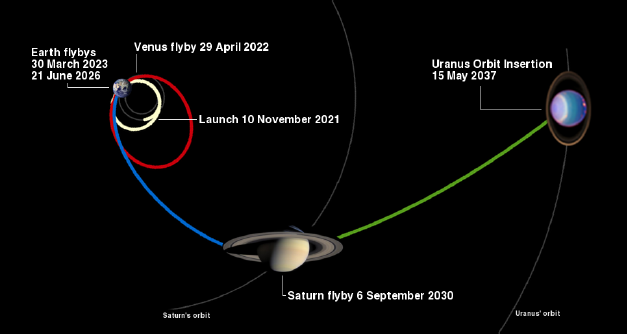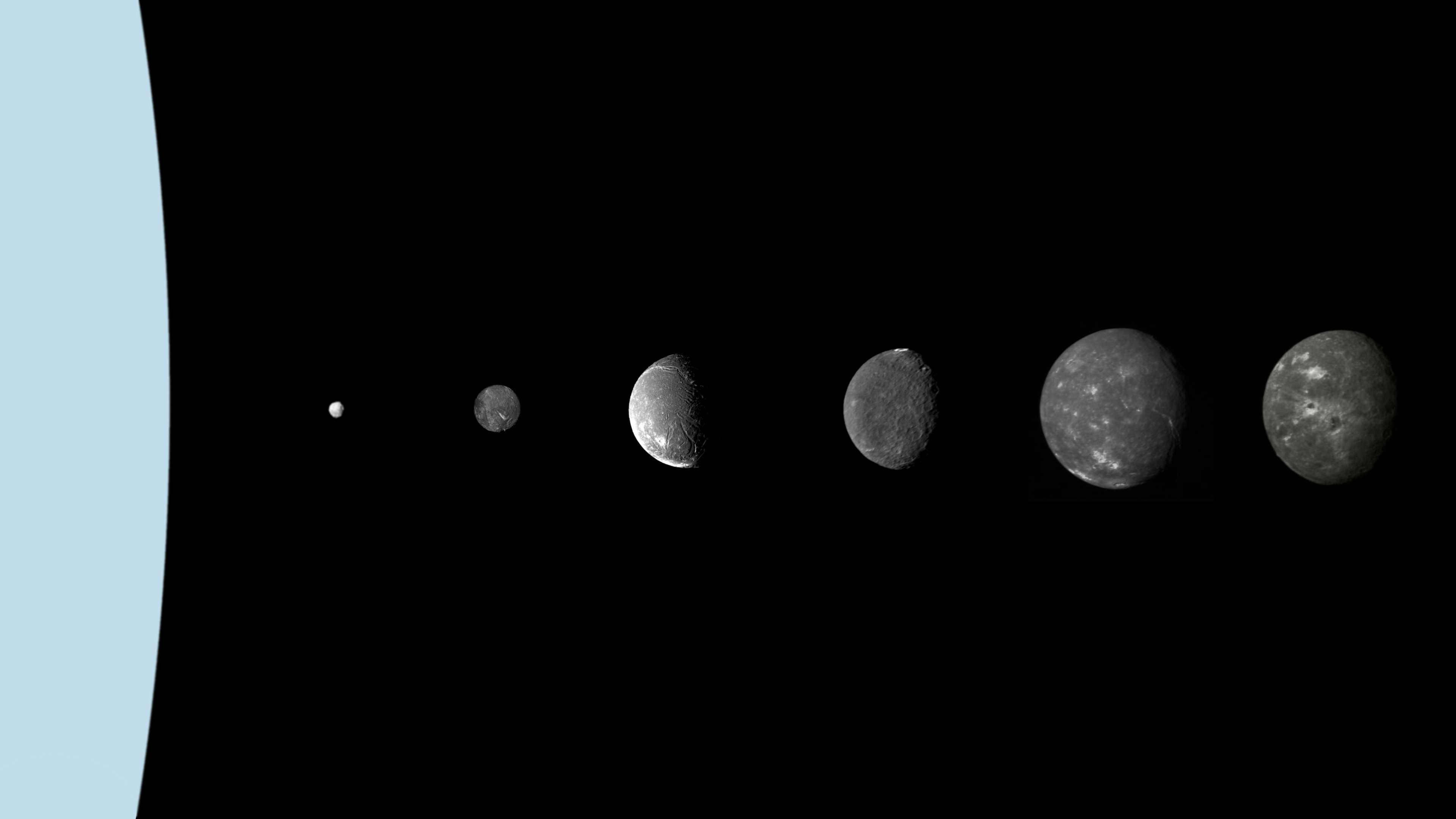|
ODINUS
ODINUS (Origins, Dynamics, and Interiors of the Neptunian and Uranian Systems) is a space mission concept proposed to the European Space Agency's Cosmic Vision programme. The ODINUS mission concept proposes to expand the Uranus orbiter and probe mission to two twin orbiters— dubbed ''Freyr'' and ''Freyja'', the twin gods of the Norse pantheon. Their primary mission would be to study Neptune and Uranus with one orbiter each. If selected, ODINUS would launch in 2034. Instruments The following six instruments are considered essential to the mission: *Camera (Wide and Narrow Angle) – Designed to image the planet at the same level of detail as missions to the two gas giants have provided. *VIS-NIR Image Spectrometer *Magnetometer – To study the magnetic fields of Neptune. *Mass Spectrometer (Ions and Neutrals, INMS) *Doppler Spectro-Imager – To take seismic measurements. *Microwave Radiometer The following two additional instruments are strongly desired by the mission proposer ... [...More Info...] [...Related Items...] OR: [Wikipedia] [Google] [Baidu] |
Exploration Of Neptune
Neptune has been directly explored by one space probe, ''Voyager 2'', in 1989. , there are no confirmed future missions to visit the Neptunian system, although a tentative Chinese mission has been planned for launch in 2024. NASA, ESA, and independent academic groups have proposed future scientific missions to visit Neptune. Some mission plans are still active, while others have been abandoned or put on hold. Since the mid-1990s, Neptune has been studied from afar with telescopes, including the Hubble Space Telescope and the ground-based Keck telescope using adaptive optics. ''Voyager 2'' After ''Voyager 2'' visited Saturn successfully, it was decided to fund further missions to Uranus and Neptune. These missions were conducted by the Jet Propulsion Laboratory, and the Neptunian mission was dubbed "Voyager Neptune Interstellar Mission". ''Voyager 2'' started taking navigation images of Neptune in May 1988. ''Voyager 2'' observation phase proper of Neptune began 5 June 1989, t ... [...More Info...] [...Related Items...] OR: [Wikipedia] [Google] [Baidu] |
Exploration Of Uranus
The exploration of Uranus has, to date, been through telescopes and a lone probe by NASA's ''Voyager 2'' spacecraft, which made its closest approach to Uranus on January 24, 1986. ''Voyager 2'' discovered 10 moons, studied the planet's cold atmosphere, and examined its ring system, discovering two new rings. It also imaged Uranus' five large moons, revealing that their surfaces are covered with impact craters and canyons. A number of dedicated exploratory missions to Uranus have been proposed, but none have been approved. ''Voyager 2'' ''Voyager 2'' made its closest approach to Uranus on January 24, 1986, coming within of the planet's cloud tops. This was the probe's first solo planetary flyby, since ''Voyager 1'' ended its tour of the outer planets at Saturn's moon Titan. Uranus is the third-largest planet in the Solar System. It orbits the Sun at a distance of about and completes one orbit every 84 years. The length of a day on Uranus as measured by ''Voyager 2'' is ... [...More Info...] [...Related Items...] OR: [Wikipedia] [Google] [Baidu] |
Uranus Pathfinder
Uranus Pathfinder was a mission concept for the Uranian system evaluated in the 2010s by the European Space Agency. In 2011, scientists from the Mullard Space Science Laboratory in the United Kingdom proposed the joint NASA–ESA ''Uranus Pathfinder'' mission to Uranus. It would be a medium-class (M-class) mission to be launched in 2022, and was submitted to the ESA in December 2010 with the signatures of 120 scientists from around the globe. ESA caps the cost of M-class missions at €470 million. Uranus Pathfinder was proposed in support of ESA's Cosmic Vision 2015–2025. The mission study including several possible combinations of launch dates, trajectories, and flybys (gravity assists), including flybys of Earth, Venus, and of the planet Saturn. Indeed, the study noted the velocity change requirements are only marginally higher than for typical missions to Saturn of this period. In the baseline concept, UP is an ESA–NASA bilateral mission and it would launch on an At ... [...More Info...] [...Related Items...] OR: [Wikipedia] [Google] [Baidu] |
MUSE (spacecraft)
MUSE (Mission to Uranus for Science and Exploration) is a European proposal for a dedicated mission to the planet Uranus to study its atmosphere, interior, moons, rings, and magnetosphere. It is proposed to be launched with an Ariane 6 in 2026, travel for 16.5 years to reach Uranus in 2044, and would operate until 2050. The European Space Operations Centre would monitor and control the mission, as well as generate and provide the raw data sets. In 2012, the cost was estimated at €1.8 billion. The mission addresses the themes of the ESA Cosmic Vision 2015–2025. This was designed as an L-Class flagship level mission; however, it is constrained by the need for RTGs. MUSE was also analyzed in the US as an Enhanced New Frontiers class mission in 2014. Orbiter The orbiter science phase would consist on the Uranus Science Orbit (USO) phase of approximately 2 years in a highly elliptic polar orbit to provide best gravimetry data, during which 36 Uranus orbits are performed. Subs ... [...More Info...] [...Related Items...] OR: [Wikipedia] [Google] [Baidu] |
Missions To Neptune
Mission (from Latin ''missio'' "the act of sending out") may refer to: Organised activities Religion *Christian mission, an organized effort to spread Christianity *Mission (LDS Church), an administrative area of The Church of Jesus Christ of Latter-day Saints *The Christian Mission, the former name of the Salvation Army Government and military *Bolivarian missions, a series of social programs created during Hugo Chávez's rule of Venezuela *Diplomatic mission, a diplomatic outpost in a foreign territory *Military operation *Mission statement, a formal, short, written articulation of an organization's purpose *Sortie or combat mission, a deployment or dispatch of a military unit *Space mission, a journey of craft into outer space Geography Australia * Mission River, Queensland, a locality in the Shire of Cook and the Aboriginal Shire of Napranum *Mission River (Queensland), a river in Australia Canada *Mission, British Columbia, a district municipality *Mission, Calgary, A ... [...More Info...] [...Related Items...] OR: [Wikipedia] [Google] [Baidu] |
Missions To Uranus
Mission (from Latin ''missio'' "the act of sending out") may refer to: Organised activities Religion *Christian mission, an organized effort to spread Christianity * Mission (LDS Church), an administrative area of The Church of Jesus Christ of Latter-day Saints *The Christian Mission, the former name of the Salvation Army Government and military *Bolivarian missions, a series of social programs created during Hugo Chávez's rule of Venezuela *Diplomatic mission, a diplomatic outpost in a foreign territory *Military operation * Mission statement, a formal, short, written articulation of an organization's purpose * Sortie or combat mission, a deployment or dispatch of a military unit *Space mission, a journey of craft into outer space Geography Australia * Mission River, Queensland, a locality in the Shire of Cook and the Aboriginal Shire of Napranum *Mission River (Queensland), a river in Australia Canada *Mission, British Columbia, a district municipality *Mission, Calgary ... [...More Info...] [...Related Items...] OR: [Wikipedia] [Google] [Baidu] |
Proposed Space Probes
Proposal(s) or The Proposal may refer to: * Proposal (business) * Research proposal * Proposal (marriage) * Proposition, a proposal in logic and philosophy Arts, entertainment, and media * ''The Proposal'' (album) Films * ''The Proposal'' (1957 film), an Australian television play based on Chekhov's 1890 play * ''The Proposal'' (2001 film), starring Nick Moran, Jennifer Esposito, and Stephen Lang * ''The Proposal'' (2009 film), starring Sandra Bullock and Ryan Reynolds * ''The Proposal'' (2022 film), starring Joe Joseph and Amara Raja * " La propuesta" ("The Proposal"), a short story in the 2014 Argentina anthology film ''Wild Tales'' Literature * ''Proposals (play)'', a 1997 play by Neil Simon * ''The Proposal'' (novel), 1999 and 35th book in the ''Animorphs'' series by K.A. Applegate * ''The Proposal'', alternative title of Chekhov's 1890 play ''A Marriage Proposal'' Television * ''The Proposal'' (American TV series), a 2018 reality dating series * The Proposal (Aust ... [...More Info...] [...Related Items...] OR: [Wikipedia] [Google] [Baidu] |
OCEANUS
In Greek mythology, Oceanus (; grc-gre, , Ancient Greek pronunciation: , also Ὠγενός , Ὤγενος , or Ὠγήν ) was a Titan son of Uranus and Gaia, the husband of his sister the Titan Tethys, and the father of the river gods and the Oceanids, as well as being the great river which encircled the entire world. Etymology According to M. L. West, the etymology of Oceanus is "obscure" and "cannot be explained from Greek". The use by Pherecydes of Syros of the form "Ogenos" (''Ὠγενός'') for the name lends support for the name being a loanword. However, according to West, no "very convincing" foreign models have been found. A Semitic derivation has been suggested by several scholars, while R. S. P. Beekes has suggested a loanword from the Aegean Pre-Greek non-Indo-European substrate. Nevertheless, Michael Janda sees possible Indo-European connections. Genealogy Oceanus was the eldest of the Titan offspring of Uranus (Sky) and Gaia (Earth). Hesiod lists hi ... [...More Info...] [...Related Items...] OR: [Wikipedia] [Google] [Baidu] |
Neptune
Neptune is the eighth planet from the Sun and the farthest known planet in the Solar System. It is the fourth-largest planet in the Solar System by diameter, the third-most-massive planet, and the densest giant planet. It is 17 times the mass of Earth, and slightly more massive than its near-twin Uranus. Neptune is denser and physically smaller than Uranus because its greater mass causes more gravitational compression of its atmosphere. It is referred to as one of the solar system's two ice giant planets (the other one being Uranus). Being composed primarily of gases and liquids, it has no well-defined "solid surface". The planet orbits the Sun once every 164.8 julian year (astronomy), years at an average distance of . It is named after the Neptune (mythology), Roman god of the sea and has the astronomical symbol , representing Neptune's trident. Neptune is not visible to the unaided eye and is the only planet in the Solar System found by mathematical prediction ... [...More Info...] [...Related Items...] OR: [Wikipedia] [Google] [Baidu] |
Uranus
Uranus is the seventh planet from the Sun. Its name is a reference to the Greek god of the sky, Uranus (mythology), Uranus (Caelus), who, according to Greek mythology, was the great-grandfather of Ares (Mars (mythology), Mars), grandfather of Zeus (Jupiter (mythology), Jupiter) and father of Cronus (Saturn (mythology), Saturn). It has the third-largest planetary radius and fourth-largest planetary mass in the Solar System. Uranus is similar in composition to Neptune, and both have bulk chemical compositions which differ from that of the larger gas giants Jupiter and Saturn. For this reason, scientists often classify Uranus and Neptune as "ice giants" to distinguish them from the other giant planets. As with gas giants, ice giants also lack a well defined "solid surface." Uranus's Atmosphere#Others, atmosphere is similar to Jupiter's and Saturn's in its primary composition of hydrogen and helium, but it contains more "volatiles, ices" such as water, ammonia, and methane, al ... [...More Info...] [...Related Items...] OR: [Wikipedia] [Google] [Baidu] |
Magnetometer
A magnetometer is a device that measures magnetic field or magnetic dipole moment. Different types of magnetometers measure the direction, strength, or relative change of a magnetic field at a particular location. A compass is one such device, one that measures the direction of an ambient magnetic field, in this case, the Earth's magnetic field. Other magnetometers measure the magnetic dipole moment of a magnetic material such as a ferromagnet, for example by recording the effect of this magnetic dipole on the induced current in a coil. The first magnetometer capable of measuring the absolute magnetic intensity at a point in space was invented by Carl Friedrich Gauss in 1833 and notable developments in the 19th century included the Hall effect, which is still widely used. Magnetometers are widely used for measuring the Earth's magnetic field, in geophysical surveys, to detect magnetic anomalies of various types, and to determine the dipole moment of magnetic materials. In an air ... [...More Info...] [...Related Items...] OR: [Wikipedia] [Google] [Baidu] |




